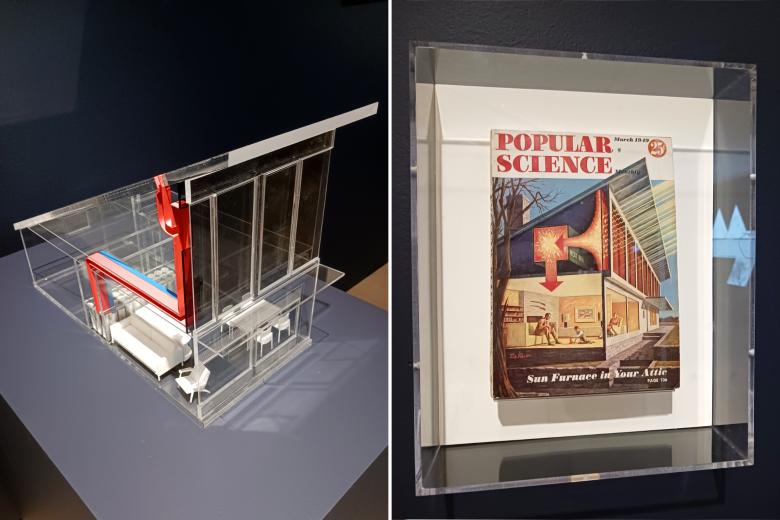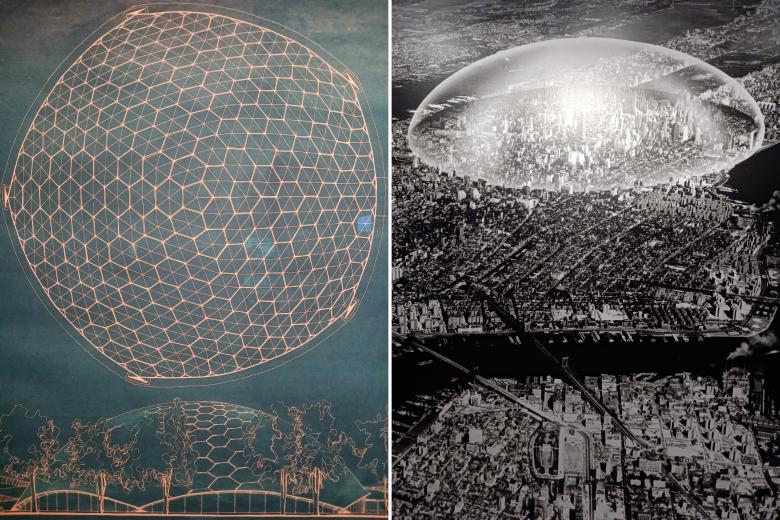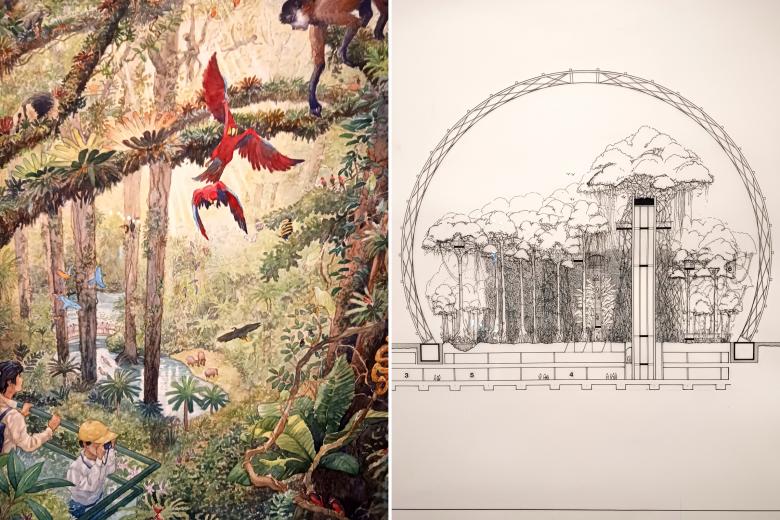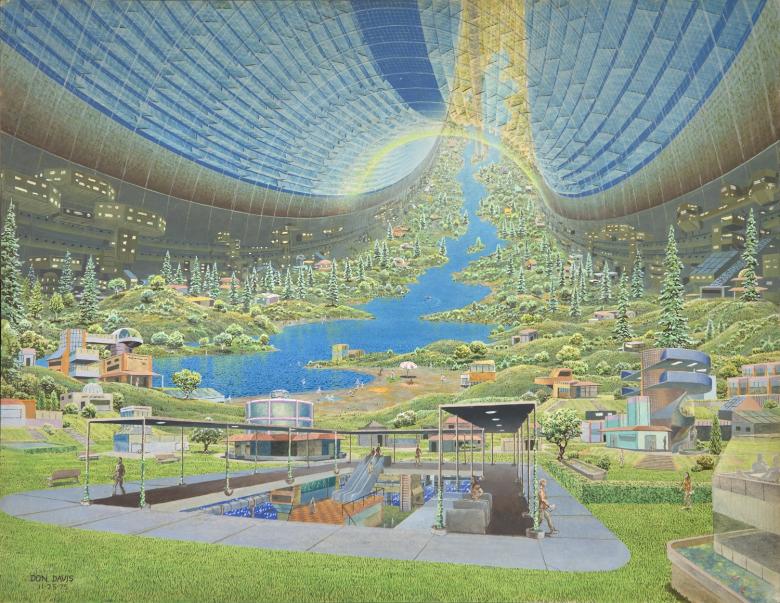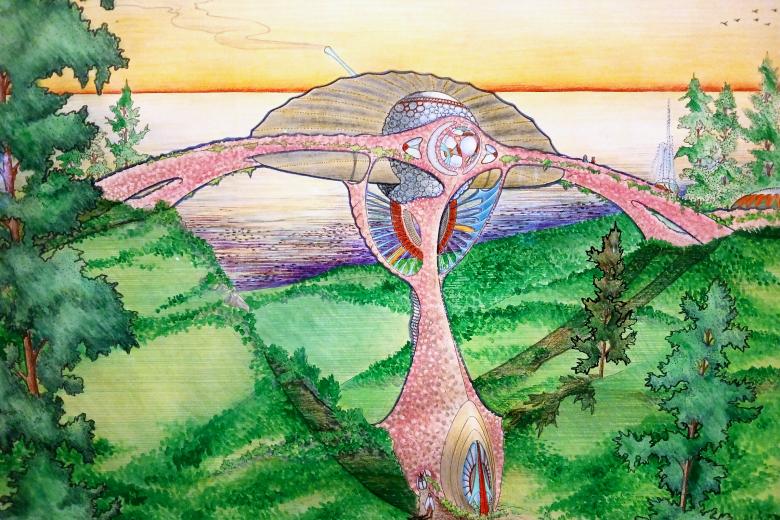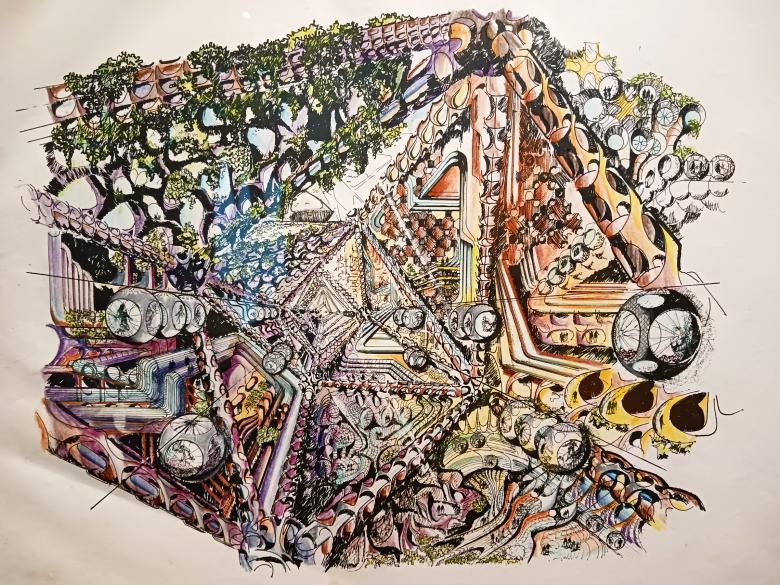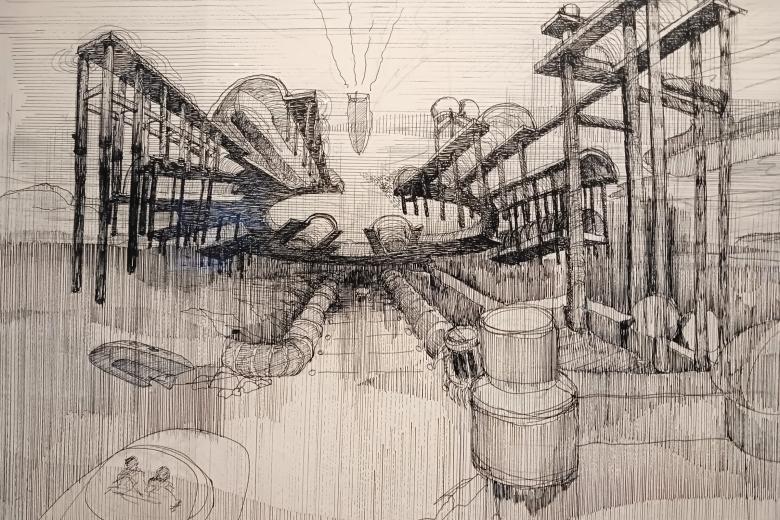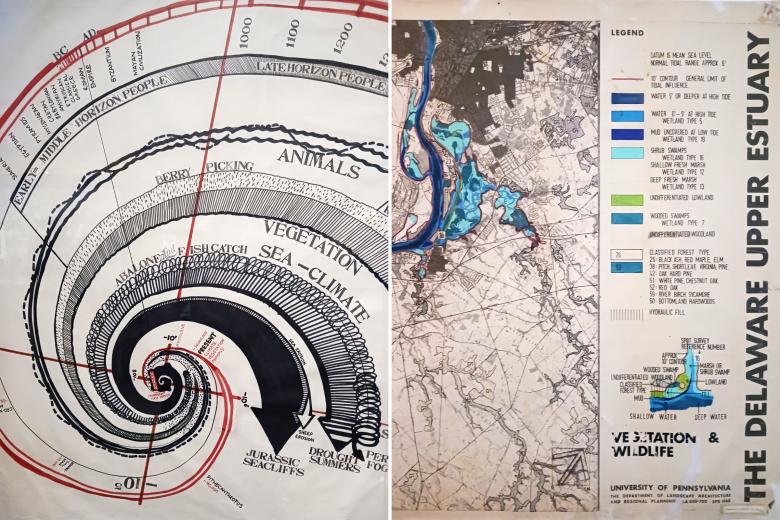'Emerging Ecologies' at MoMA
Environmental Architecture on Display
Eugene Tssui, "Venturus" Wind Generated Dwelling for Mr. and Mrs. Peter Cook, Victoria, BC, Canada, 1982 (Collection Eugene Tssui)
Emerging Ecologies: Architecture and the Rise of Environmentalism, the inaugural exhibition from the Emilio Ambasz Institute for the Joint Study of the Built and Natural Environment at the Museum of Modern Art (MoMA), opened to the public on September 17.
Billed as the “first major museum exhibition to survey the relationship between architecture and the environmental movement in the United States,” Emerging Ecologies presents drawings, models, and other artifacts that cover roughly six decades: from the mid-1930s to the mid-1990s. Even so, the heart of the exhibition is really just two decades: the sixties and seventies, when dramatic social and cultural change combined with a strong environmental awareness to foster new approaches for architecture.
Geodesic domes, earth-sheltered houses, outer-space habitats — these are just a few of the alternative environments that were envisioned at the time but are now almost shorthand for the era's optimism and, some might argue, naïveté. Seeing so many iconic and lesser-known works of environmental architecture together now, at a time when optimism is hard to come by, is refreshing: a reminder that architects addressing this century's climate crises need to do it with creativity and imagination.
Below is a visual tour through Emerging Ecologies, which is on display in MoMA's third-floor architecture galleries until January 24, 2024.
Emerging Ecologies: Architecture and the Rise of Environmentalism was organized by Carson Chan, director of the Emilio Ambasz Institute for the Joint Study of the Built and Natural Environment, with Matthew Wagstaffe, Dewi Tan, and Eva Lavranou.
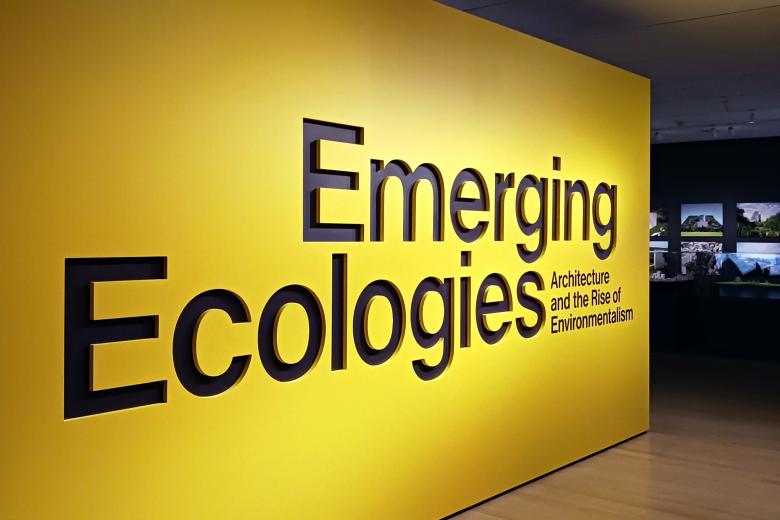

Visitors reaching the exhibition by elevator first see a timeline of relevant events and dates for the artifacts in the exhibition (not pictured), while those reaching it from the escalators confront this wall and a choice of a left or right into the galleries. The photos that follow trace the clockwise path I took through the exhibition on my visit. (Photo: John Hill/World-Architects)
Although most of the exhibition focuses on the 1960s and 70s, the “Prehistory of Environmental Architecture” — one of a half-dozen sections in the show — reaches back to the 1930s and 40s, with solar-oriented projects such as the Dover Sun House (left) by Mária Telkes and Eleanor Raymond and the March 1949 issue of Popular Science (right), “Sun Furnace in Your Attic.” (Photos: John Hill/World-Architects)
The “Enclosed Ecologies” section is anchored by numerous works featuring — no surprise — R. Buckminster Fuller, the inventor of the geodesic dome. Many such domes were designed by other firms, such as the Climatron at St. Louis Botanical Garden (left) by Murphy & Mackey and Synergetics, built in 1959. Around 1960, Fuller and Shoji Sadao proposed the Dome over Manhattan (right), one of the most iconic images in the show. (Photos: John Hill/World-Architects)
A few decades after Cambridge Seven Associates built the huge geodesic dome at Expo 67 in Montreal, the firm proposed “their most ambitious attempt at curating nature,” per the exhibition catalog: Tsuruhama Rain Forest Pavilion in Osaka, Japan. Designed in 1993–94, the project was never built. (Photos: John Hill/World-Architects)
The phrase “Enclosed Ecologies” should also bring to mind the outer-space habitats proposed in the mid-1970s by NASA and physicist Gerard K. O'Neill. Although the cylindrical and torus-shaped settlements were practical solutions addressing energy and resource flows, the paintings by Rick Guidice and Don Davis are what are remembered four decades later. (Pictured: Don Davis, Stanford torus interior view, 1975. Collection Don Davis)
The most colorful and fantastical section of the exhibition is “Life Forms,” in which designers ranging from Ant Farm and Wolf Hilbertz to Glen Small and Eugene Tssui found inspiration in nature and developed projects that could be seen as early forms of biomimicry. Tssui, a protege of Frank Lloyd Wright and Bruce Goff made captivated colored-pencil drawings for projects such as Residence for Dr. and Mrs. Russell Cotteral, Prototype Residential Design Number Two, Albany, California, 1985. (Photo: John Hill/World-Architects)
Glen Small, one of the many co-founders of the Southern California Institute of Architecture (SCI-Arc), has devoted himself to visionary ecological design over his long career. Pictured is Biomorphic Biosphere. Project. Drawing of a flying house, 1973. (Collection Glen Small)
The “flying house” was but a small part of Small's larger Biomorphic Biosphere project (1969–82), which he envisioned as a massive structure that would have taken shape over Los Angeles at heights of around 8,000 feet, absorbing the region's great population growth and returning the landscape below it back to nature. (Photo: John Hill/World-Architects)
Although architect Carolyn Dry's drawings are not as colorful as the other pieces in “Life Forms,” they are potentially more influential. By taking inspiration from the structure of bones and coral polyps, among other parts of nature, she developed designs strongly tied to their environments. Pictured is an Ocean Habitat project from around 1975. (Photo: John Hill/World-Architects)
While many of the images on display in Emerging Ecologies are famous and therefore familiar, seeing originals of them large on the walls is rewarding. Among the iconic images are Lawrence Halprin & Associates' The Sea Ranch Ecoscore (ca. 1968) in the “Critical Experiments” section and the huge Delaware Upper Estuary drawings from Ian McHarg's University of Pennsylvania design and research studio in 1968 in the “Environment as Information” section. (Photos: John Hill/World-Architects)
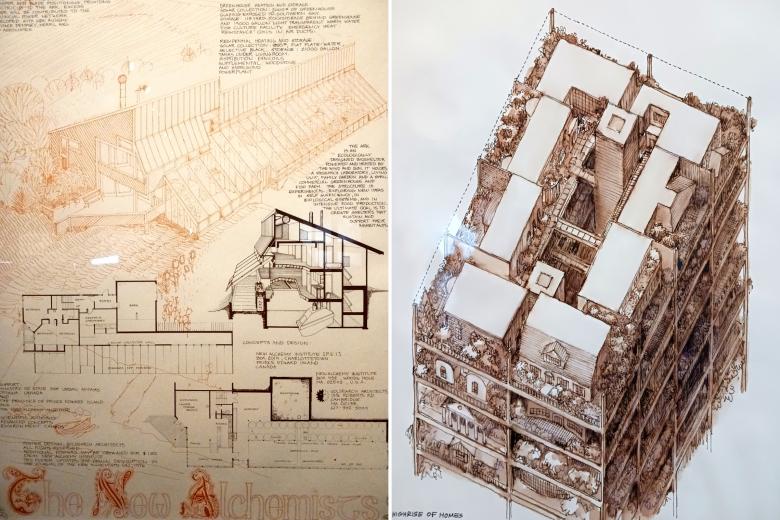

Many more drawings and most of the exhibition's few models are found in the large “Green Poetics” section that rounds out this visual tour. James Wines's famous Highrise of Homes project from 1982 (right) envisioned the floors of steel-frame high-rises as settings for suburban homes. Though not as famous, the New Alchemy Institute benefited from having its “Ark of Prince Edward Island” actually built; it was designed by Solsearch Architects and beautifully described in the poster at left. (Photos: John Hill/World-Architects)


Underground and earth-sheltered architecture by the likes of Malcolm Wells comprise part of the “Green Poetics” section. Most stunning is the large drawing by Italian architect and designer Gaetano Pesce for the Church of Solitude, a conceptual proposal for a skylighted church excavated beneath a vacant lot in Manhattan. It followed by a few years The Period of Great Contaminations, a similarly underground space he contributed to MoMA's 1972 exhibition Italy: The New Domestic Landscape that was curated by Emilio Ambasz. (Photo: John Hill/World-Architects)
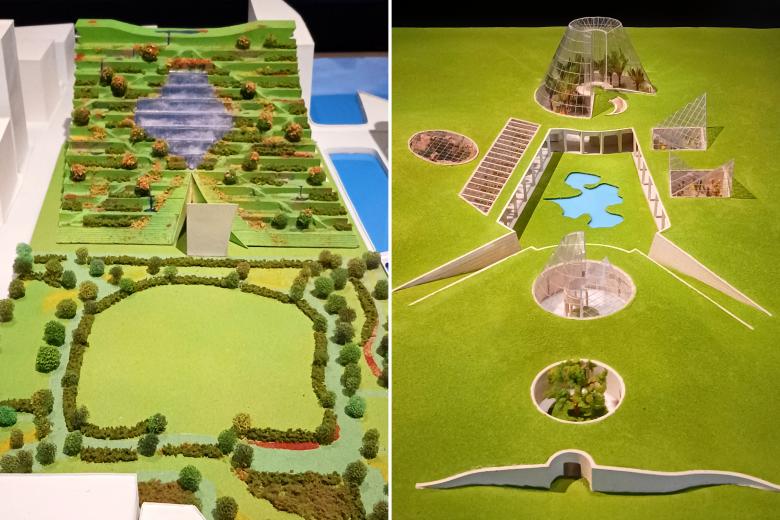

Last but hardly least are these two models of landscape-centric buildings designed by the namesake of the Emilio Ambasz Institute for the Joint Study of the Built and Natural Environment. At right is the Lucille Halsell Conservatory, built in San Antonio, Texas, in 1982; at left is the Prefectural International Hall, built in Fukuoka, Japan, in 1990. Both projects are built examples of environmental architecture — realizations of the ideas found elsewhere in the show, and perhaps subtle hints at what future shows from the Ambasz Institute might be. (Photos: John Hill/World-Architects)


